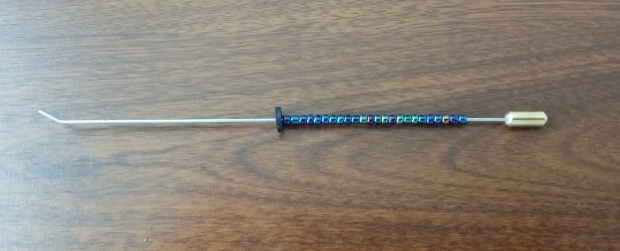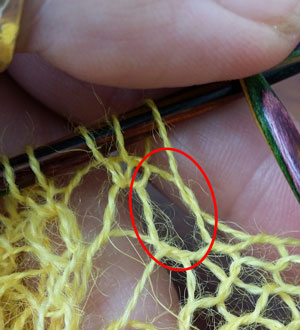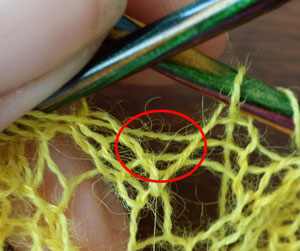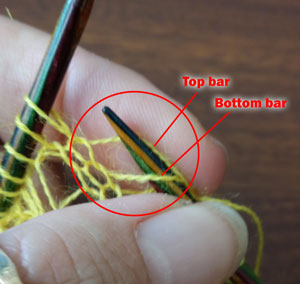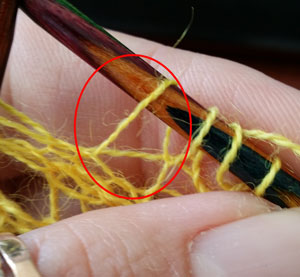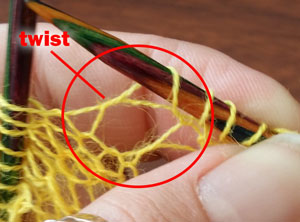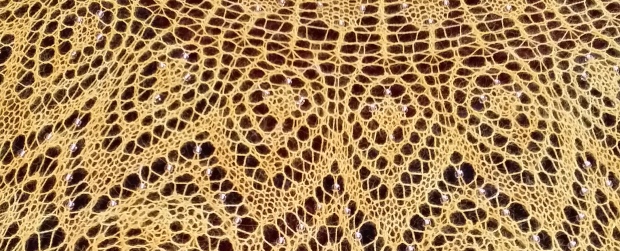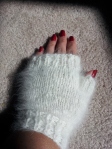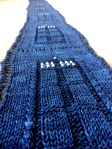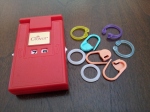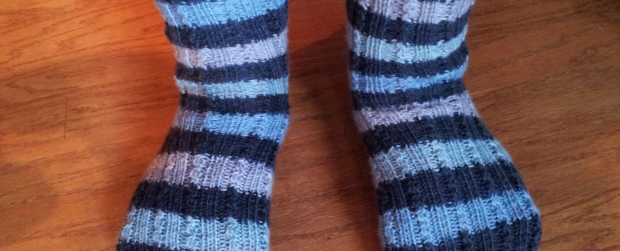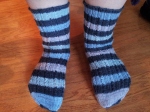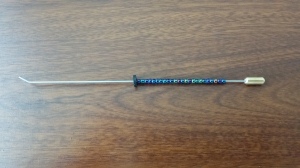 As I knit more and more, I really enjoy lace projects – especially ones with beads. But I’ve found that adding the beads can be a bit tedious. The first project I did, I tried to use a needle threader to add beads – disaster! They kept breaking. Then, I got a small steel crochet hook that would hold about 3-5 beads and that was my defacto menthod. But now, thanks to the mention of a great tool in a pattern I recently purchased, I know that the very best way to add beads to my knitting is to use a Fleegle Beader. I’m not affiliated with the tool in any way, but I absolutely love it.
As I knit more and more, I really enjoy lace projects – especially ones with beads. But I’ve found that adding the beads can be a bit tedious. The first project I did, I tried to use a needle threader to add beads – disaster! They kept breaking. Then, I got a small steel crochet hook that would hold about 3-5 beads and that was my defacto menthod. But now, thanks to the mention of a great tool in a pattern I recently purchased, I know that the very best way to add beads to my knitting is to use a Fleegle Beader. I’m not affiliated with the tool in any way, but I absolutely love it.
What’s so awesome about the Fleegle Beader?
- You can use smaller-sized beads that size 6/0. With the medium-sized beader, you can use size 8/0 beads – which often come in a great variety.
- You can load a TON more beads up at a time that you could ever do with a crochet hook.
- It’s a really well-made product that doesn’t seem to bend out of shape. And its easy to use!
- Depending on your project, it makes it easy to take enough beads with you to do quite a bit of knitting, without worrying about them going everywhere.
- It comes with a handle little plastic tube that you can put it in when loaded and that fits nicely in your knitting bag.
- Best of all – you can use it with a Bead Spinner!! That’s an item that lets you load beads onto your Fleegle Beader in record time.
Watch this video to see how to use the device. Its slow as molasses, but worth the watch anyway. Fast forward to 2:15 if you want to watch it in action with the Bead Spinner.
The Fleegle Beader can be purchased here: The Gossamer Web on Etsy. It comes in 3 sizes: 0.8 mm, 1.0 mm or 1.3 mm. Note: The 1.3 mm is supposed to work with size 6/0 beads and up to Fingering Weight yarn, but I had difficulty with it – many of the beads wouldn’t go over the curve and I couldn’t put the beads on even lace weight yarn.
